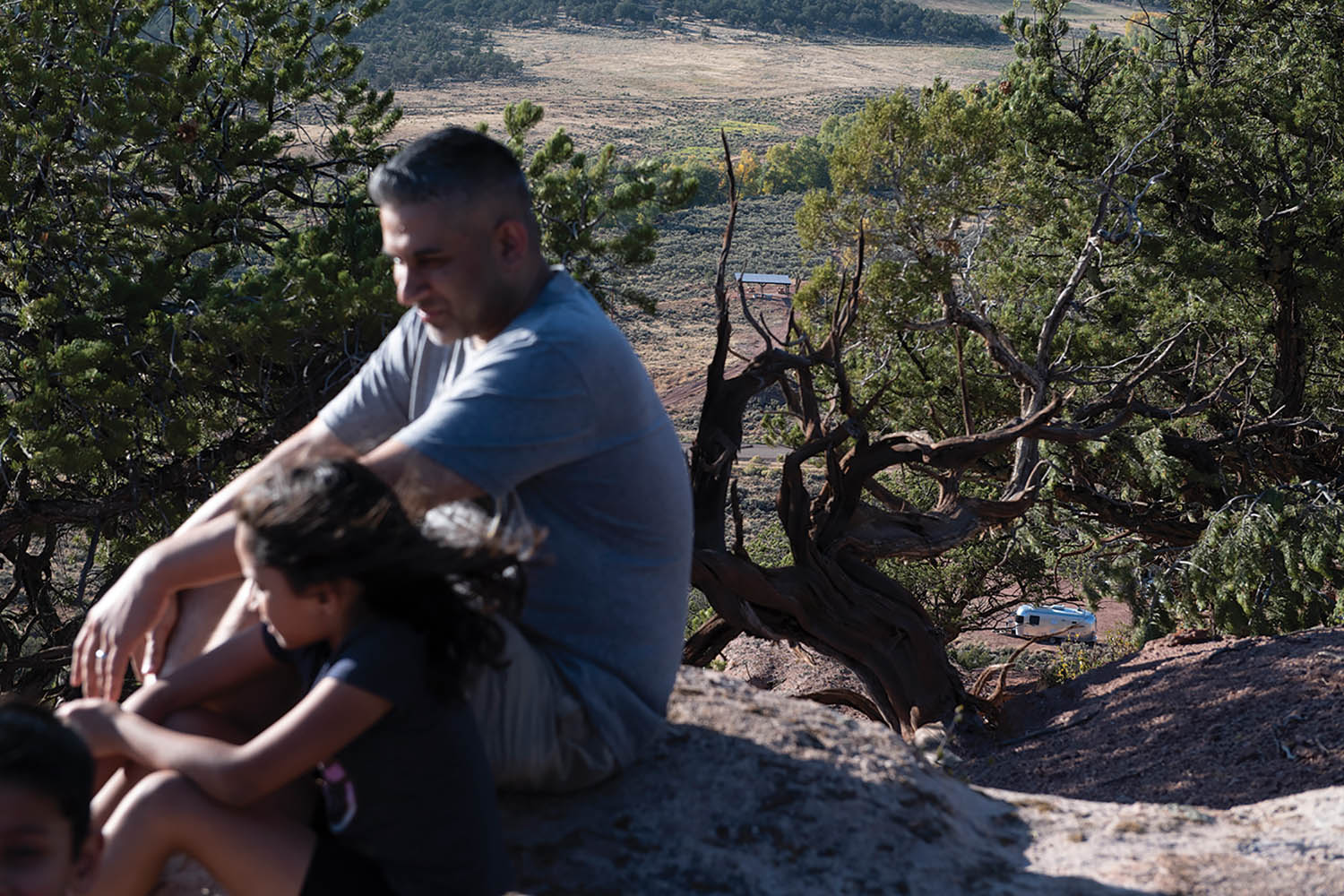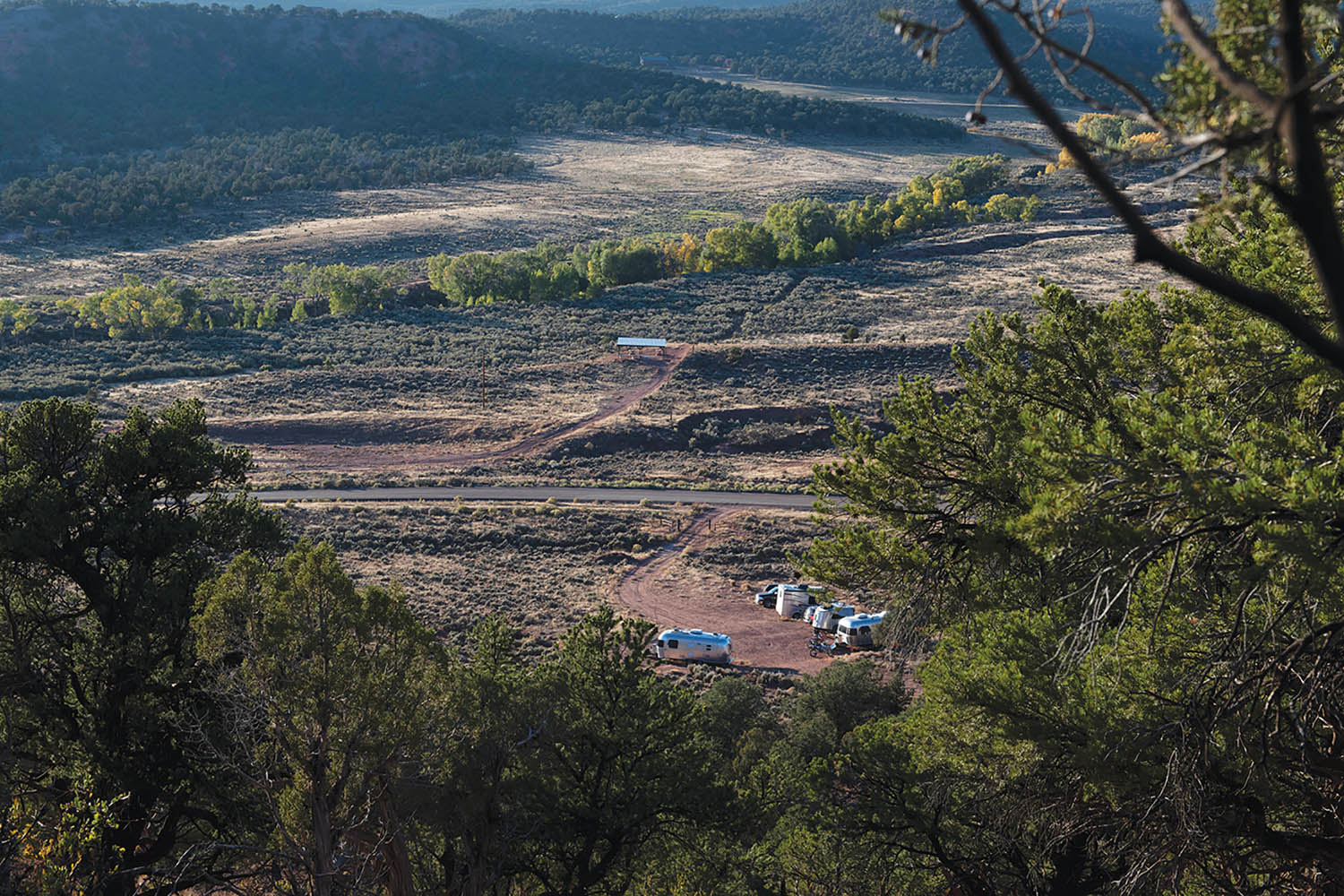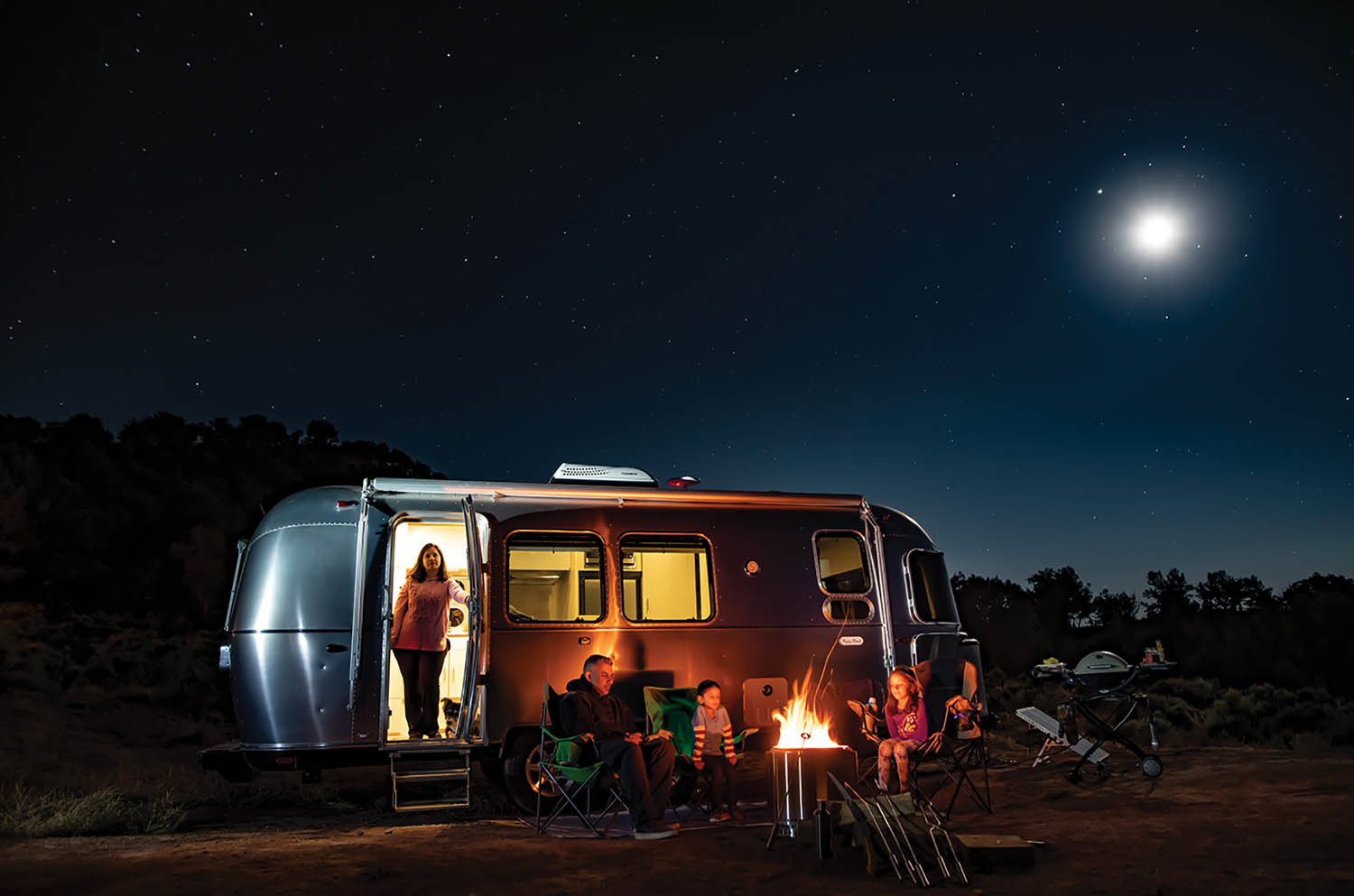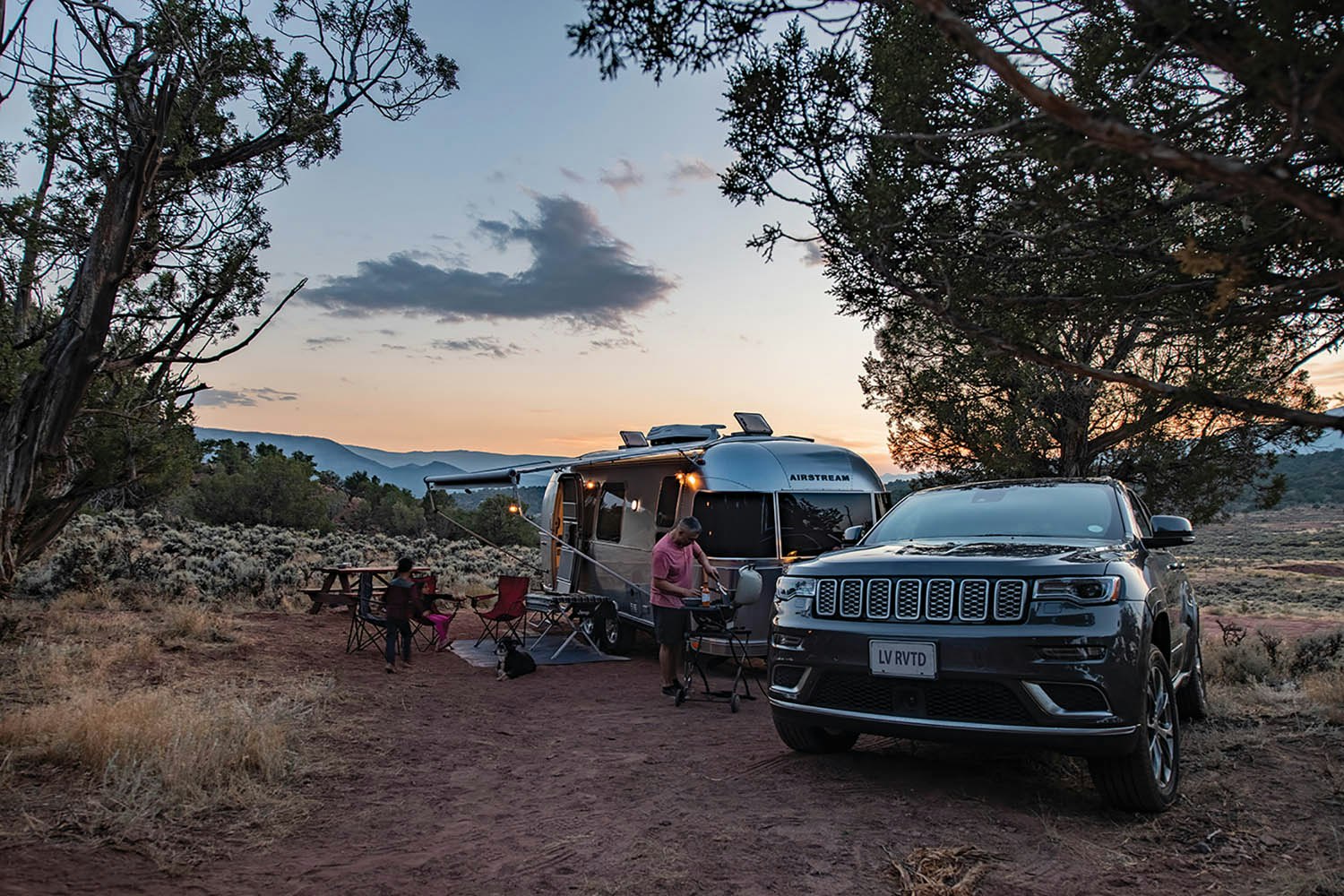Sure, you can plug in at the campground. But if you want to get off the grid, you need to keep an eye on your resources – including the electricity you need to power your adventure.
Every Airstream is outfitted with batteries and propane tanks. Depending on how much you're committed to stretching your remote experience, you can stay out for upwards – or even beyond – a week before needing to refill water and propane, and recharge their batteries. Add a solar panel, and you can really push your off-the-grid knowhow.
If you are new to boondocking, take your RV for a practice run. You can do this at a campsite or even in your driveway. This is a great way to get a feel for how much power you use in a day without the stress of being far from civilization and home.



The Basics
It’s a good idea to understand how much power different appliances, devices, lights, and other conveniences use, so you have a better idea of what you are working with.
Your power is provided either from your battery bank or propane tank. Your stove, refrigerator, hot water heater, and furnace can all run on propane. Your lights, fans, furnace fan, water pumps, AC unit, microwave, and outlets all use power stored in your batteries.
Battery Bank
All Airstream travel trailers, except the Basecamp and Bambi, come standard with a 1,000-watt pure sin power inverted. This is what allows you to use the outlets in your RV to plug things into a wall socket like your computer. When your power inverter is on, it is pulling some power from your batteries even if nothing is plugged in.
Running a microwave or A/C unit on just a battery bank is not possible – although there are innovations coming out every day that get us closer to that reality. If you are taking your Airstream off the grid without an upgrade to solar with a large battery bank or an upgrade to an inverter generator, you will have to go without these conveniences.
That leaves lights, fans, furnace fans, water pumps, and outlets pulling from your batteries. LED lights are the lowest pulling of all. Devices that plugin via USB or 12v plug (cigarette lighter plug) also pull a fairly low amount of power. How long your batteries last will depend on how much power you need to use.

Propane Tanks
Your refrigerator and hot water heater can run off of both electricity or propane. If you are boondocking, switch these devices to gas. Of all the things running off of propane, your furnace will go through gas the quickest. Next, is your hot water heater.
Both the fridge and the stove are fairly efficient. If you are going to be staying off the grid for an extended period, you can conserve fuel by cooking quick one-pot meals and avoiding taking a shower.
Most of the time, your batteries will need to be charged before you run out of propane.
Recharging
There are three ways to recharge your batteries: driving, solar panels, or a generator. When you are driving and your Airstream is plugged into your tow vehicle via the 7-way connector, your RV batteries are being charged.
This is great when you are moving around a lot, but when you are boondocking, you may want to be stationary for several days. That’s where a generator or solar panels come in handy. They keep your batteries topped off, and, depending on your setup, can even allow you to run an A/C unit and other large draw appliances.
If you plan on boondocking a lot, you will want to invest in either a generator or solar panels, or possibly both.

Solar Versus Generator
When it comes to creating power while boondocking, the two main options are a generator or solar setup. A lot of people choose to go the generator route first. It is a quick and easy solution, and it can generate power regardless of weather conditions. And, if you decide to upgrade to solar down the line, you can use your generator as a backup.
The downside to a generator is that they are loud and require fuel to operate. Although inverter generators are much quieter than open frame generators, they can still be disruptive. Most campgrounds limit the time of day you can run generators. When boondocking, be courteous to other campers in the area as well as wildlife. There are some new developments in propane generators that look promising, too.
If you decide to go the solar route, you will need to invest in solar panels and a charge controller at the very least. You may want to upgrade your battery bank as well. This will depend on your power needs.
One of the big benefits of solar is that once you’re set up, your power is essentially free. Powering your Airstream with solar is quiet, lightweight, and will ultimately save you money on energy. The downside is that you will have reduced energy capture on cloudy and rainy days, and determining your power needs isn’t always easy. You can always add panels and batteries in the future, though.
Tips for Conserving Energy
Regardless of the route you take, you will need to keep an eye on your energy consumption. Depleting your batteries beyond 50% can damage them and reduce their lifetime. You don’t want to run out of fuel or get stuck without power on a rainy day.
- Charge all your devices during peak hours. For your generator, peak time is when the generator is running. For solar, it is when your panels are getting the most sun. This will reduce the amount of pull on your batteries during times when they aren’t being charged.
- Only use your heat furnace when you NEED to. Turning the heat on in your RV uses a lot of fuel. You want to be comfortable, but you don’t need to wear short sleeves in the dead of winter.
- Park in the sun in colder climates.
- Open curtains when the sun is out to let the sun help heat your RV.
- Close curtains at night to help insulate the windows.
- Wear extra layers, and bring extra blankets.
- Warm yourself up with activities during the day.
- Don’t use your devices while charging. Your phones, tablets, and computers will charge faster if you aren’t actively using them while charging.
- Don’t use your computer at night. Instead, use a tablet or your phone. You can also use a tablet to stream entertainment instead of using the TV.
- Turn on one light at a time. You don’t need to have all your Airstream’s lights on at once. Turn lights off as you leave an area. Install LED lights or replace existing lights with LEDs.
- Turn your inverter off when not in use. Your invertor needs power of its own when turned on. Even if you aren’t using outlets, your invertor is still using power.
- Don’t run the A/C. Unless you have a generator that can run your unit, you will be foregoing A/C. Buy a 12V fan to use near the bed at night.
- Use a portable battery charger. You can charge the portable battery during the day, and use it to keep your devices charged at night.
- Keep flashlights and headlamps on hand. Use flashlights or a headlamp for light to help conserve power. You can even purchase solar lanterns, and charge them during the day.
- Do things the old-fashioned way. Make coffee in a percolator or French Press. Pop popcorn over the fire. It can actually be quite fun.

Camping off the grid can be an enlightening experience in a lot of ways. You can learn valuable lessons that you can use even when your resources aren't limited. You often get to enjoy camping away from the crowds and in breathtaking areas. One of the best ways to conserve power is to go outside and play. That's what you're there for anyway.









